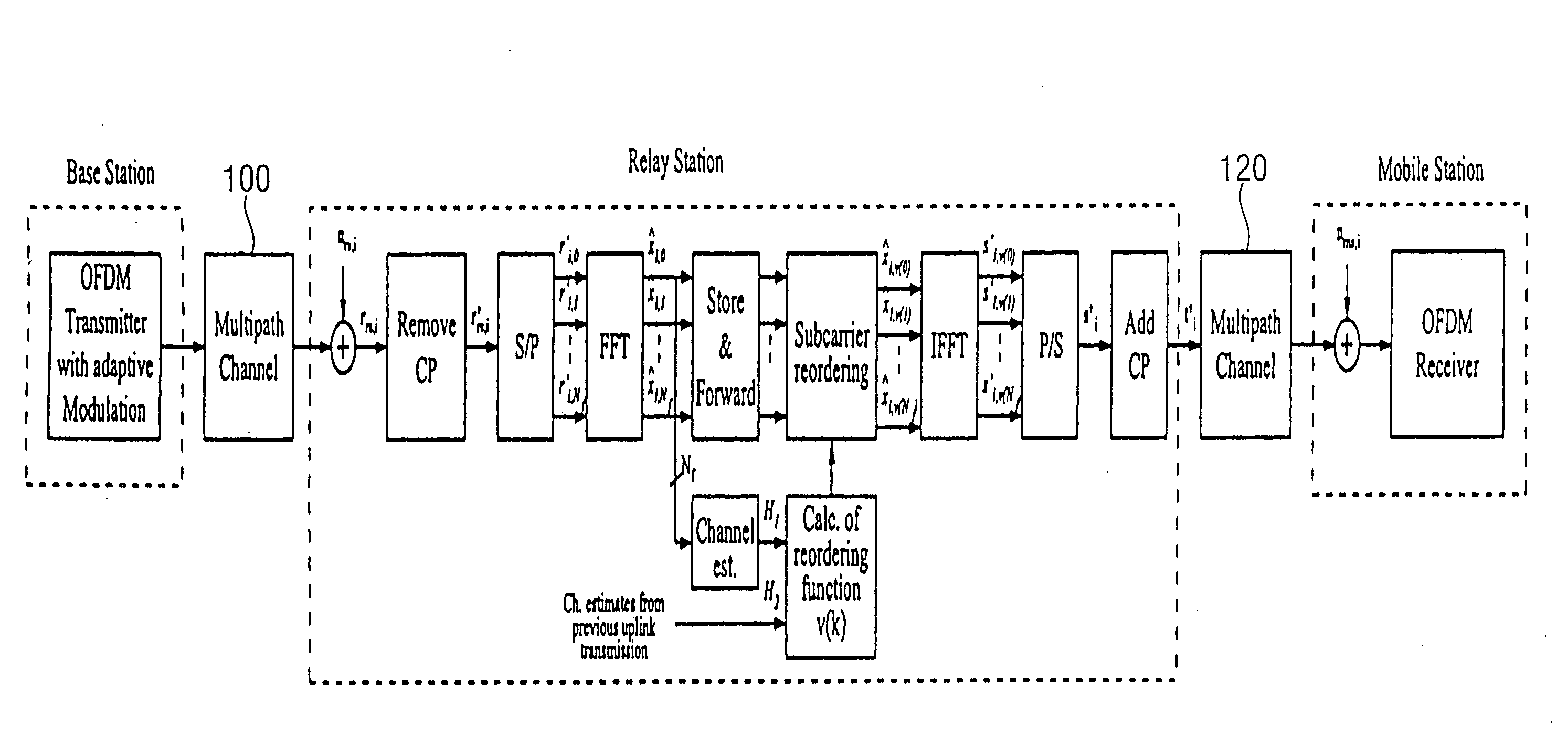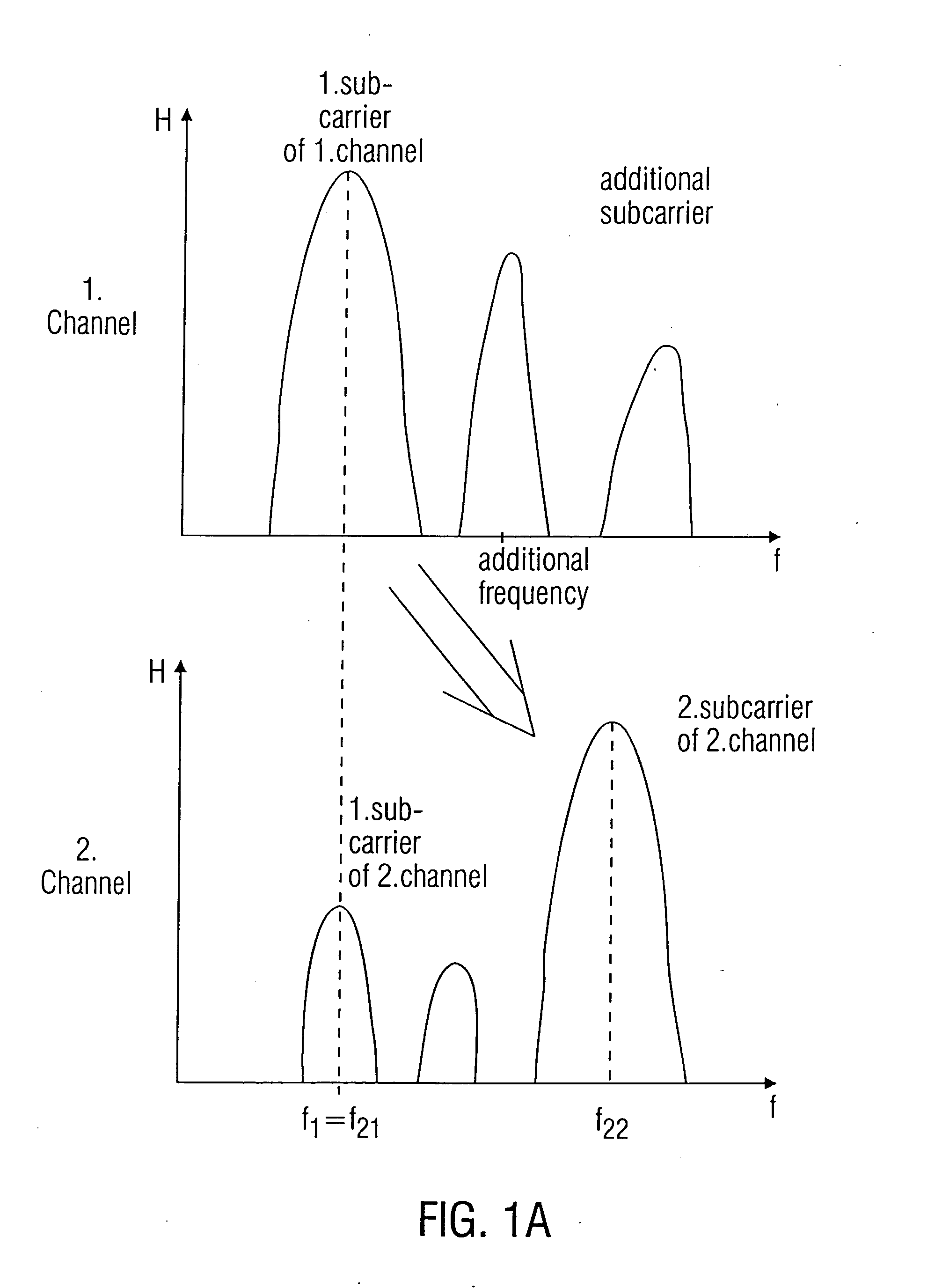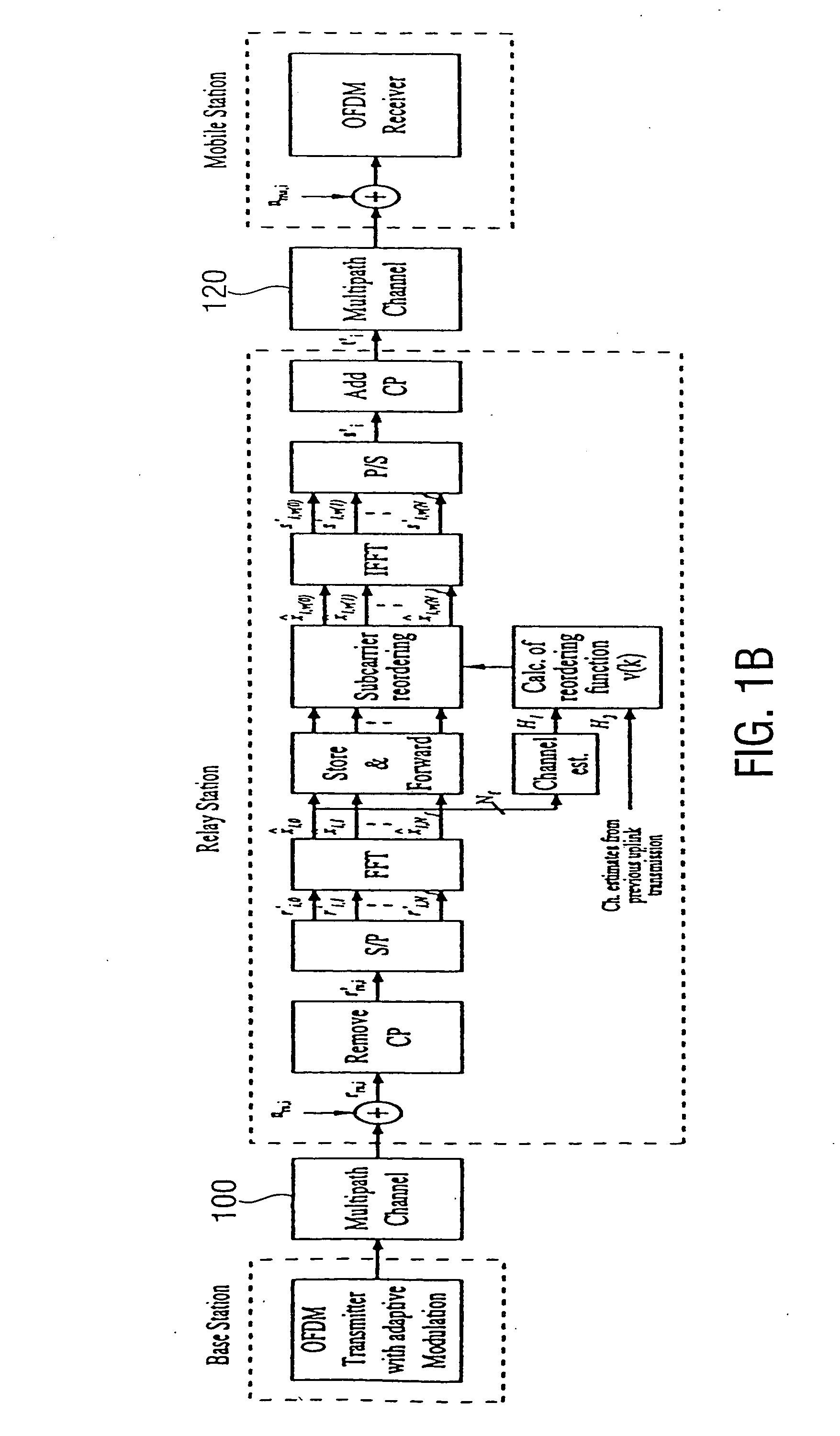Method for relaying information received via a first channel to a second channel and relay apparatus
a relay apparatus and information technology, applied in the field of communication, can solve the problems of loss, loss of snr, inability to overcome this disadvantage, etc., and achieve the effect of reducing the overhead of signaling, maximizing overall capacity, and high effor
- Summary
- Abstract
- Description
- Claims
- Application Information
AI Technical Summary
Benefits of technology
Problems solved by technology
Method used
Image
Examples
Embodiment Construction
[0038] In the FIG. 1A the inventive approach is disclosed schematically. Herein, a first channel has a first (of, for example, a plurality) of subcarriers and a second channel has a first and second subcarrier (of, for example, also a plurality of subcarriers). The first subcarrier of the first channel and the first subcarrier of the second channel have the same center frequency f1. Furthermore, the first subcarrier of the second channel has a weaker transmission property or a weaker transmission capacity than the second subcarrier of the second subcarrier of the second channel. That means, more information can be transmitted on the second subcarrier of the second channel than over the first subcarrier of the second channel. Now. The inventive approach is such that the information, transmitted over the first subcarrier of the first channel is assigned to the second subcarrier of the second channel. Thus, a relaying of information from a first channel to the second channel can be mad...
PUM
 Login to View More
Login to View More Abstract
Description
Claims
Application Information
 Login to View More
Login to View More - R&D
- Intellectual Property
- Life Sciences
- Materials
- Tech Scout
- Unparalleled Data Quality
- Higher Quality Content
- 60% Fewer Hallucinations
Browse by: Latest US Patents, China's latest patents, Technical Efficacy Thesaurus, Application Domain, Technology Topic, Popular Technical Reports.
© 2025 PatSnap. All rights reserved.Legal|Privacy policy|Modern Slavery Act Transparency Statement|Sitemap|About US| Contact US: help@patsnap.com



